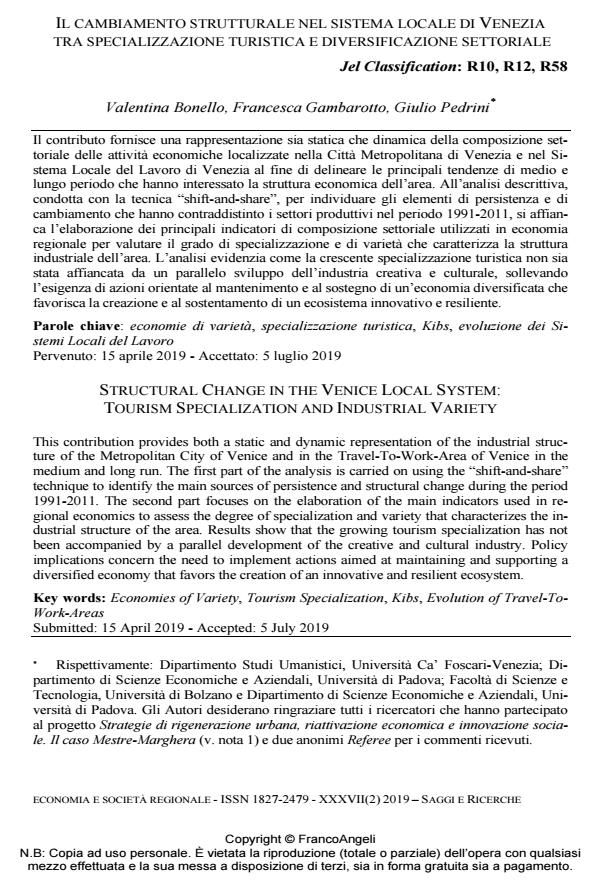Structural change in the venice local system: tourism specialization and industrial variety
Journal title ECONOMIA E SOCIETÀ REGIONALE
Author/s Valentina Bonello, Francesca Gambarotto, Giulio Pedrini
Publishing Year 2019 Issue 2019/2
Language Italian Pages 23 P. 147-169 File size 380 KB
DOI 10.3280/ES2019-002012
DOI is like a bar code for intellectual property: to have more infomation
click here
Below, you can see the article first page
If you want to buy this article in PDF format, you can do it, following the instructions to buy download credits

FrancoAngeli is member of Publishers International Linking Association, Inc (PILA), a not-for-profit association which run the CrossRef service enabling links to and from online scholarly content.
This contribution provides both a static and dynamic representation of the industrial structure of the Metropolitan City of Venice and in the Travel-To-Work-Area of Venice in the medium and long run. The first part of the analysis is carried on using the "shift-and-share" technique to identify the main sources of persistence and structural change during the period 1991-2011. The second part focuses on the elaboration of the main indicators used in regional economics to assess the degree of specialization and variety that characterizes the industrial structure of the area. Results show that the growing tourism specialization has not been accompanied by a parallel development of the creative and cultural industry. Policy implications concern the need to implement actions aimed at maintaining and supporting a diversified economy that favors the creation of an innovative and resilient ecosystem.
Keywords: Economies of Variety, Tourism Specialization, Kibs, Evolution of Travel-To- Work-Areas
Valentina Bonello, Francesca Gambarotto, Giulio Pedrini, Il cambiamento strutturale nel sistema locale di Venezia tra specializzazione turistica e diversificazione settoriale in "ECONOMIA E SOCIETÀ REGIONALE " 2/2019, pp 147-169, DOI: 10.3280/ES2019-002012